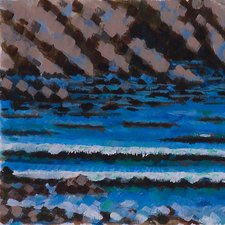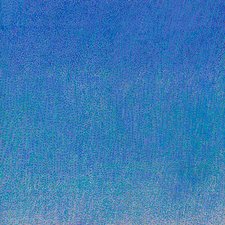Ralph Coburn
1923 - 2018
Ralph Coburn was born in Minneapolis in 1923, spent his childhood in Miami Beach and continued to spend winters on Florida’s East Coast for most of long life. When asked what influenced his decision to become involved in the arts, Coburn recalled that, growing up in the 1930s in what was essentially the Art Deco capital of the world, he was inspired by all the building going on around him. “I would design houses just for the fun of it,” he remembered, “and thought that maybe I should be an architect.” At the age of 18, intent on doing just that, Coburn enrolled in the architectural program at the Massachusetts Institute of Technology. By 1946, after a stint in the Air Force working as a draftsman, Coburn left MIT and turned his attention to drawing and painting.
In the years following the Second World War, Ralph Coburn immersed himself in Boston’s contemporary art scene, first by way of a job at the Institute of Modern Art (now the Institute of Contemporary Art) and then through a position at Mirski Gallery which opened on Newbury Street in 1946. According to Coburn, Boris Mirski was a great believer in the young artists coming out of Boston’s art schools and enthusiastically exhibited their works. He also made teaching space available in his building and from 1946 to 1949 Coburn was one of many artists who benefited from the instruction of Carl Nelson, Esther Geller, John Wilson, Barbara Swan and others at Mirski’s gallery.
It was during the post-war years that Ralph Coburn and a handful of other young Boston artists discovered Cape Ann. Like many, Coburn was introduced to the area by Barbara Swan whose ancestors on both her mother’s and father’s sides went back generations on Cape Ann. In 1947, Swan took a studio on Bearskin Neck in Rockport and invited several of her colleagues to come out from the city to see it. Coburn remembers traveling by train with his bicycle. Smitten with the area, Coburn returned regularly and in 1975 purchased the old barn on Washington Street in Folly Cove that had been home to the Folly Cove Designers and converted it into his summer home and studio.
In 1949, Ralph Coburn made the first of four extended trips to Paris, sojourns that expanded his horizons and had important effects on his art. Meeting up with artist friends from Boston including Barbara Swan, Ellsworth Kelly and Ninon Lacey, Coburn visited museums, galleries and the studios of some of the Europe’s most avant-garde artists including Jean Arp. Inspired by what he saw, Coburn began experimenting with color, chance-related compositions and collage. He also began exploring the possibilities of beginning his compositions by laying down a lightly penciled grid on the paper or canvas. Use of the grid was a practice Coburn returned to again and again throughout his career.
In 1957, Ralph Coburn took a job as a graphic designer in the Office of Publications at MIT. Among his responsibilities were the design and production of posters, brochures and other promotional materials related to programs held at the school. Coburn modestly remembered that he knew little about design when he took the job and learned as he went along. Not surprisingly, by the time he retired from the office 30 years later, Coburn had mastered the art of typography, winning numerous awards and recognitions for his design work.
Over the years, Coburn also taught, lectured and served as a guest critic at MIT, Yale School of Art, the Boston Museum School, Massachusetts College of Art, the Art Institute of Boston and Montserrat College of Art in Beverly, MA.

